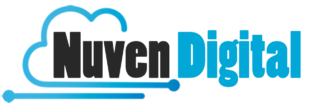Medical organizations face unique challenges connecting with patients in the increasingly digital healthcare landscape. Today’s healthcare consumers actively research symptoms, conditions, and providers online before making medical decisions. They seek trustworthy information that helps them navigate complex health topics and choose appropriate care options. This shift in patient behaviour has fundamentally changed how healthcare providers must communicate.
Effective patient education and engagement require more than traditional marketing approaches. Patients want content that addresses their specific concerns, explains medical concepts in accessible language, and helps them make informed decisions about their health. They’re looking for partners in their healthcare journey, not just service providers. For medical organizations, this evolution presents both challenges and opportunities. Creating valuable content that meets these needs while maintaining clinical accuracy requires strategic planning and execution. When done effectively, it leads to better health outcomes and stronger patient relationships.
Mapping the patient journey
Successful healthcare content marketing begins with deep insight into patient questions and concerns. Most medical searches follow predictable patterns that reflect the patient journey – from initial symptom research through condition investigation, treatment exploration, provider selection, preparation information, and recovery guidance. By mapping content to these journey stages, healthcare organizations can create resources that meet patients exactly where they are in their decision-making process. This targeted approach improves content relevance and effectiveness while demonstrating a genuine understanding of patient needs.
Creating accessible, accurate information
The most significant challenges in healthcare content marketing involve making complex medical information understandable without oversimplifying or compromising accuracy. The most effective health content uses plain language while maintaining clinical precision, defines necessary medical terminology, includes clarifying visual elements, presents information in manageable sections, acknowledges diagnostic and treatment nuances, and maintains consistent accuracy. This balance requires collaboration between clinical experts and content creators with healthcare communication expertise. When these perspectives work together, the resulting content serves both patient understanding and clinical standards.
Choosing the right content formats
Different health topics and audience needs call for varying content approaches. A diverse content mix typically delivers the most substantial results in healthcare marketing. Effective options include condition guide articles, patient stories, procedural videos, infographics visualizing complex health concepts, interactive assessment tools, and physician podcast interviews. Each format serves different patient learning preferences and information needs. By developing a strategic mix, healthcare organizations can engage diverse audiences effectively while addressing various stages of the healthcare decision journey.
Content distribution
Content creation is only half the challenge; reaching the intended audience is equally important. Effective healthcare content marketing includes thoughtful distribution through search engine optimization targeting specific health questions, relevant email programs based on patient interests; social media focused on platforms where health discussions occur, physician sharing through professional networks, patient portal integration, and strategic placement within physical care environments. This multichannel approach ensures content reaches patients through their preferred information channels, maximizing both reach and engagement while creating a cohesive patient experience across digital and physical touchpoints.
Measuring what matters
Healthcare organizations should evaluate content effectiveness through metrics directly connecting to business and patient care objectives. The most meaningful measurements go beyond basic engagement statistics to include patient acquisition influenced by content engagement, appointment requests generated through content pathways, improvements in patient preparedness and treatment plan adherence, and positive shifts in patient satisfaction ratings. These metrics provide more profound insight than standard web analytics, connecting content directly to care outcomes and organizational goals.


